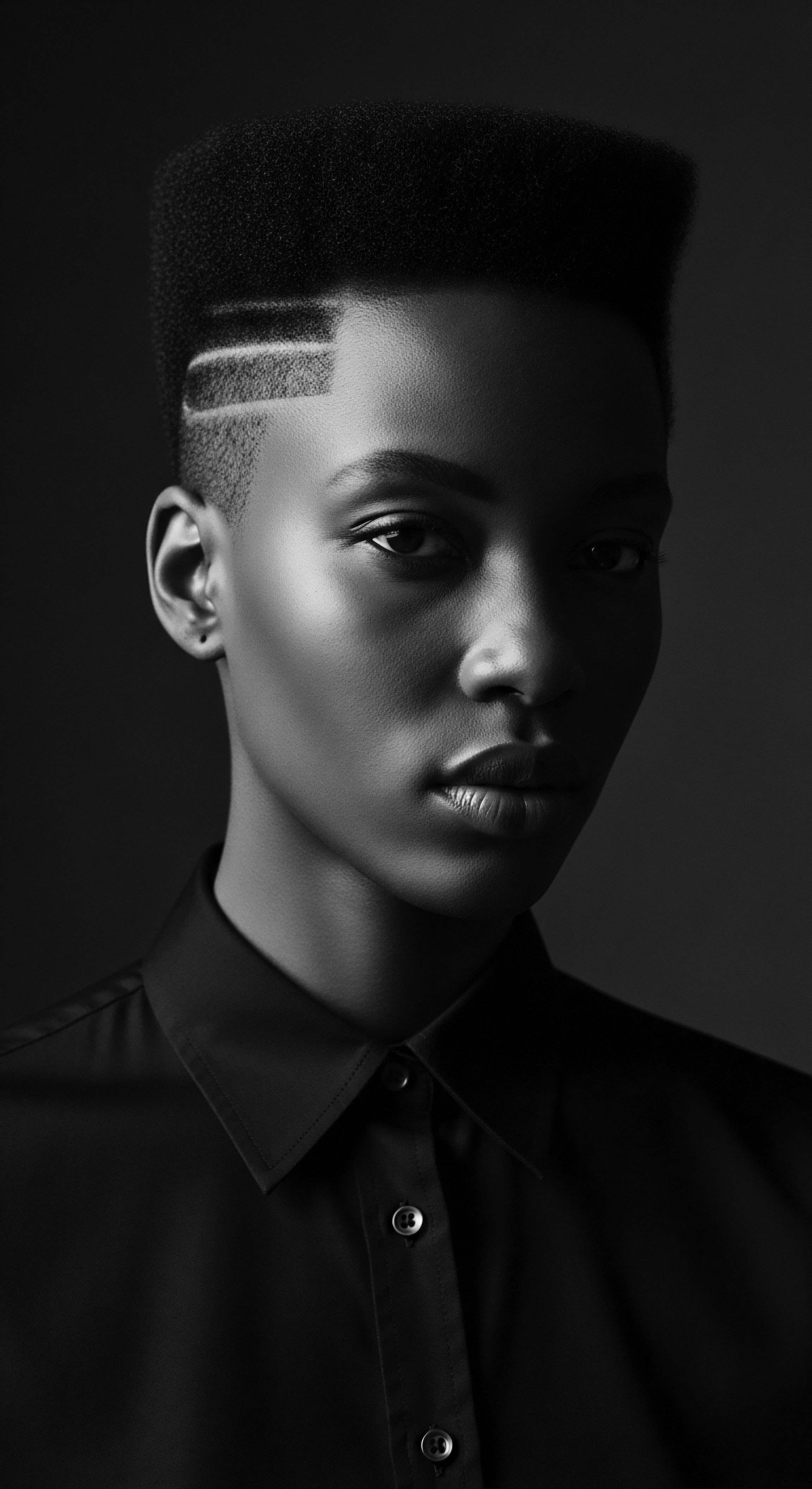
Fundamentals
Within Roothea’s ‘living library,’ the Afro-Textured Hair represents more than a biological classification; it embodies a profound heritage, a narrative woven through generations, echoing the resilience and beauty of Black and mixed-race communities across the globe. This term designates hair strands that possess a unique, inherent coiling pattern, ranging from loose waves to tight coils, each curve and bend a testament to its singular biophysical composition. The true meaning of Afro-Textured Hair extends beyond its visual characteristics; it carries the weight of ancestral wisdom, cultural identity, and a shared history of both challenge and triumph.
From the earliest known human societies, hair served as a potent symbol. In pre-colonial African societies, hairstyles communicated a person’s identity, social standing, age, marital status, religious beliefs, and even tribal affiliation. The intricate designs were not mere adornments; they were living archives, telling stories of lineage and community. This deep connection between hair and personhood formed the bedrock of early understanding regarding Afro-Textured Hair.
Archaeological evidence from ancient Egypt, the Kingdom of Kush, and various West African cultures reveals elaborate hairstyles that were expressions of power, spirituality, and social cohesion. The Yoruba people of Nigeria, for instance, crafted styles that symbolized their community roles, while the Himba tribe in Namibia wore dreadlocked styles coated with red ochre paste, symbolizing their connection to the earth and their ancestors.
The elemental structure of Afro-Textured Hair, characterized by its elliptical cross-section and numerous twists along the strand, contributes to its remarkable volume and strength, alongside a propensity for dryness and breakage if not properly cared for. Ancestral communities, long before the advent of modern science, developed sophisticated practices that intuitively addressed these needs. Their approach to hair care was holistic, intertwined with daily rituals and communal bonding.
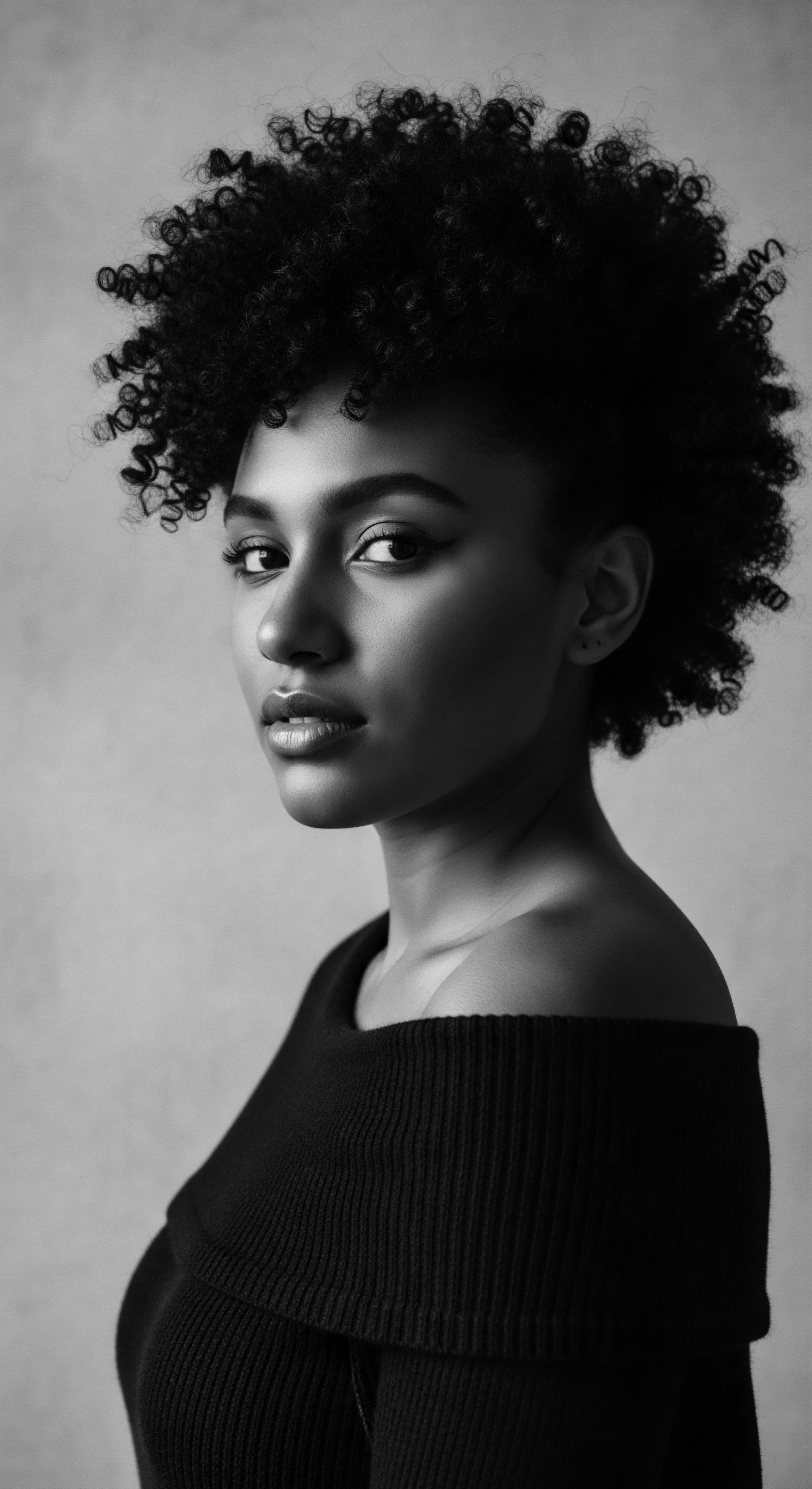
Early Recognition of Hair’s Significance
The recognition of hair’s intrinsic value permeated ancient African civilizations. Hair was often considered the most elevated part of the body, a conduit for spiritual interaction with the divine. This belief fostered a reverence for hair care, transforming it into a sacred practice.
The meticulous washing, oiling, braiding, and decorating of hair, which often took hours or even days, became cherished social opportunities to bond with family and friends. This tradition of communal care continues to hold meaning today, connecting contemporary practices to a long lineage of shared experiences.
Afro-Textured Hair, at its core, represents a profound connection to ancestral heritage, a living testament to identity and resilience across generations.
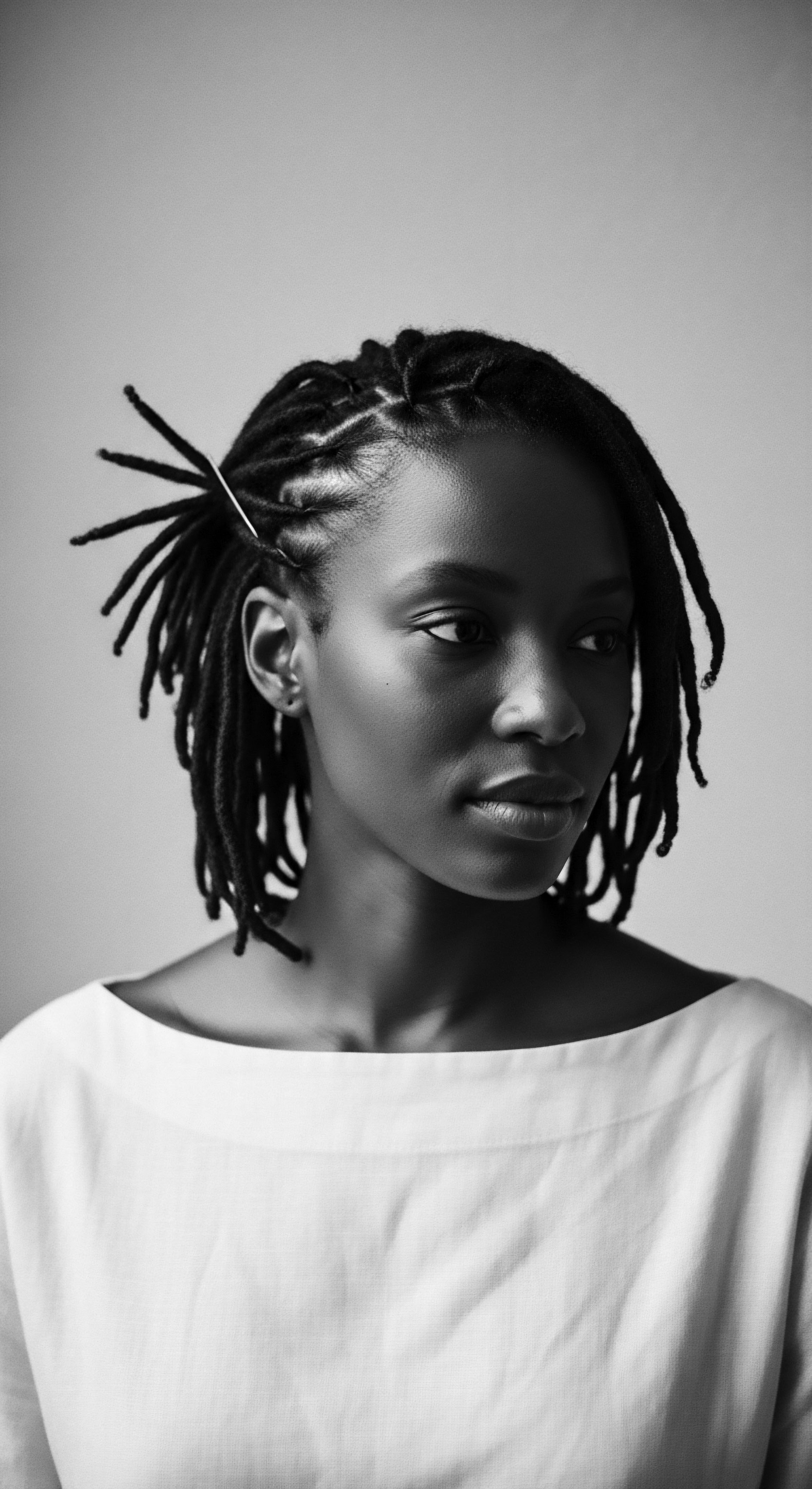
Ancestral Practices and Natural Elements
Ancestral communities relied upon the bounty of their natural environments to nurture Afro-Textured Hair. Their practices were deeply informed by ethnobotanical knowledge, a nuanced understanding of local plant resources and their beneficial properties. Natural butters, herbs, and powders were used to retain moisture and promote health. This wisdom, passed down through oral traditions and hands-on teaching, provided the foundation for effective care, honoring the hair’s unique biological needs through natural means.
- Shea Butter ❉ A staple from West Africa, derived from the nuts of the shea tree, revered for its moisturizing and protective qualities, often used to seal in hydration and soften coils.
- Rhassoul Clay ❉ Originating from the Atlas Mountains of Morocco, this mineral-rich clay served as a gentle cleanser, purifying the scalp and hair without stripping natural oils.
- African Black Soap ❉ A traditional cleanser from West Africa, crafted from plantain skins, cocoa pods, and shea butter, known for its deep cleansing yet gentle action.
- Marula Oil ❉ Sourced from Southern Africa, this oil offered nourishment and shine, recognized for its ability to condition hair and scalp.

Intermediate
Moving beyond its foundational aspects, the Afro-Textured Hair carries an intermediate meaning rooted in the continuity and adaptation of heritage practices across the African diaspora. Its significance expands to encompass how traditional knowledge of care and styling has been transmitted, modified, and preserved through centuries, serving as a powerful link to cultural identity and communal solidarity. The narrative of Afro-Textured Hair in this context speaks to a dynamic interplay between historical continuity and contemporary expression, where each coil and curl tells a story of survival and cultural affirmation.
The transatlantic slave trade presented a brutal rupture in the lives of African people, including their connection to hair. Enslaved Africans were often stripped of their elaborate hairstyles and had their heads shaved upon arrival in the Americas, a deliberate act designed to dehumanize and erase their cultural identity. Yet, despite these profound efforts to dismantle their heritage, the ancestral knowledge of hair care and styling persisted.
Enslaved individuals found clandestine ways to reclaim control over their appearance, using hair to subtly defy European-imposed beauty standards. Headwraps, for instance, became symbols of dignity and resilience, protecting hair from harsh conditions while preserving cultural heritage.
The enduring wisdom of ancestral approaches to Afro-Textured Hair, often centered on practices like braiding, twisting, and oiling, finds intriguing echoes and expansions in our contemporary understanding of hair health. These traditional techniques were not merely aesthetic choices; they were functional strategies for protecting hair from damage, minimizing breakage, and promoting length retention. This continuity of practice, even under duress, highlights the profound cultural value placed upon Afro-Textured Hair and the ingenuity of those who preserved its care.
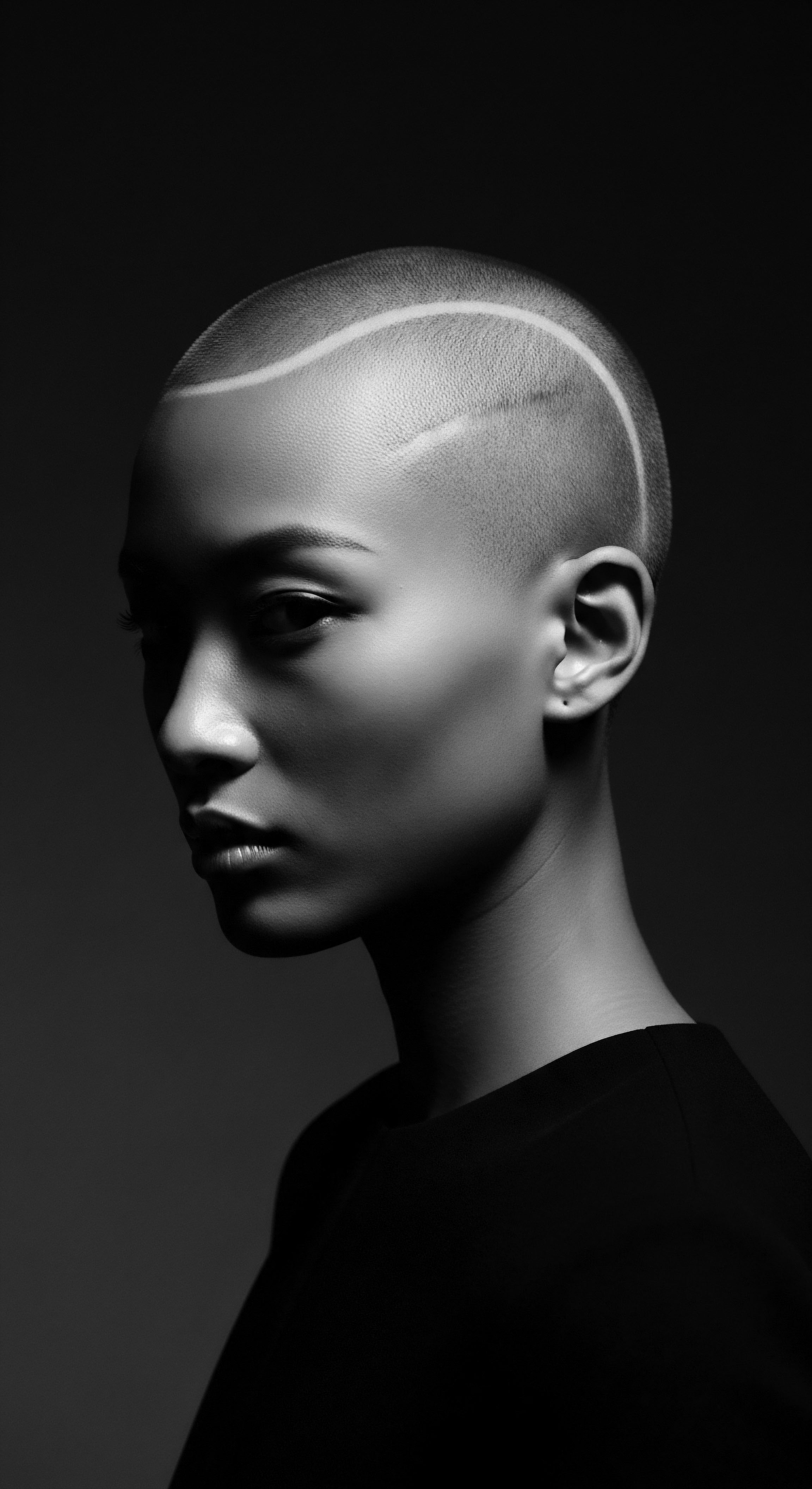
The Living Legacy of Care
The legacy of Afro-Textured Hair care is a living tradition, passed down from elders to younger generations. This transmission of knowledge often occurred within intimate family settings, such as “kitchen table” hair sessions, where techniques for cleansing, detangling, and styling were shared alongside stories, advice, and communal support. This ritual of hairstyling fostered social solidarity, a means for community members to share experiences and maintain unity, even in foreign or hostile environments. The historical continuity of these practices, from ancient communal gatherings to modern-day family routines, underscores the deep societal function of Afro-Textured Hair care beyond mere grooming.
The journey of Afro-Textured Hair care from ancestral lands to diasporic communities illustrates an unbroken chain of wisdom, adapted yet always rooted in cultural preservation.

Regional Expressions of Heritage
The styling of Afro-Textured Hair has always varied across regions, reflecting the diverse ethnic groups and cultural landscapes of Africa and its diaspora. These variations are not arbitrary; they are expressions of specific historical trajectories and communal identities. For instance, the intricate cornrow patterns used by enslaved Africans in Colombia were not simply decorative; they encoded messages, serving as maps and directions for escape.
This specific historical example powerfully illuminates Afro-Textured Hair’s connection to textured hair heritage and ancestral practices of resistance. This instance showcases how hair became a medium for survival, a secret language etched onto the scalp, a testament to profound ingenuity and the enduring spirit of freedom.
Consider the distinct styles that emerged across different diasporic communities, each a unique interpretation of shared heritage:
- Cornrows (Canerows) ❉ Originating in Africa and found across the diaspora, these tightly braided rows lying flat against the scalp were used for practical purposes and as a means of communication, particularly during periods of enslavement.
- Bantu Knots ❉ Though often associated with Southern Africa, these coiled sections of hair, secured close to the scalp, became a staple protective style in many Black populations globally, preserving hair health and traditional aesthetics.
- Locs (Dreadlocks) ❉ Rooted in various African cultures and later embraced by movements like Rastafarianism in Jamaica, locs symbolized a rejection of oppressive beauty standards and an affirmation of Black identity and spiritual connection.
- Headwraps ❉ Widely adopted across the African diaspora, headwraps served multiple purposes ❉ protection from the elements, a symbol of dignity and resilience, and an indicator of social status or marital standing in some contexts.

The Evolution of Adornment and Tools
The tools and adornments associated with Afro-Textured Hair have also evolved, yet many retain their ancestral resonance. Early African communities used natural materials like clay, oils, herbs, shells, beads, and feathers to style and decorate their hair. Combs, pins, and razors were developed to shape and cut hair, with specific designs like wide-toothed combs being essential for the unique texture of Afro-Textured Hair. The continuity of these tools, from ancient artifacts to modern iterations, underscores the enduring understanding of Afro-Textured Hair’s needs and the ingenuity in meeting them.
| Era/Origin Pre-Colonial Africa |
| Traditional Tools/Materials Wide-toothed Combs, bone pins, natural fibers, clay, plant-based oils (e.g. Shea Butter), beads, cowrie shells. |
| Contemporary Significance/Adaptation The foundational principles of gentle detangling and natural conditioning persist, informing modern detangling combs, leave-in conditioners, and the continued use of shea and other plant-based butters in formulations. |
| Era/Origin Slavery & Post-Emancipation Diaspora |
| Traditional Tools/Materials Limited access, often rudimentary tools, headwraps for protection and concealment. |
| Contemporary Significance/Adaptation Headwraps have transformed into a celebrated fashion statement and a symbol of cultural pride, while the need for protective styling remains paramount for hair health. |
| Era/Origin 20th Century Civil Rights & Black Power Movements |
| Traditional Tools/Materials Afro Picks, specialized combs for maintaining volume. |
| Contemporary Significance/Adaptation The Afro pick remains a powerful symbol of identity and resistance, widely used for styling and detangling, connecting wearers to a legacy of self-acceptance. |
| Era/Origin The tools and adornments for Afro-Textured Hair reveal a persistent commitment to care and a continuous dialogue between heritage and adaptation. |
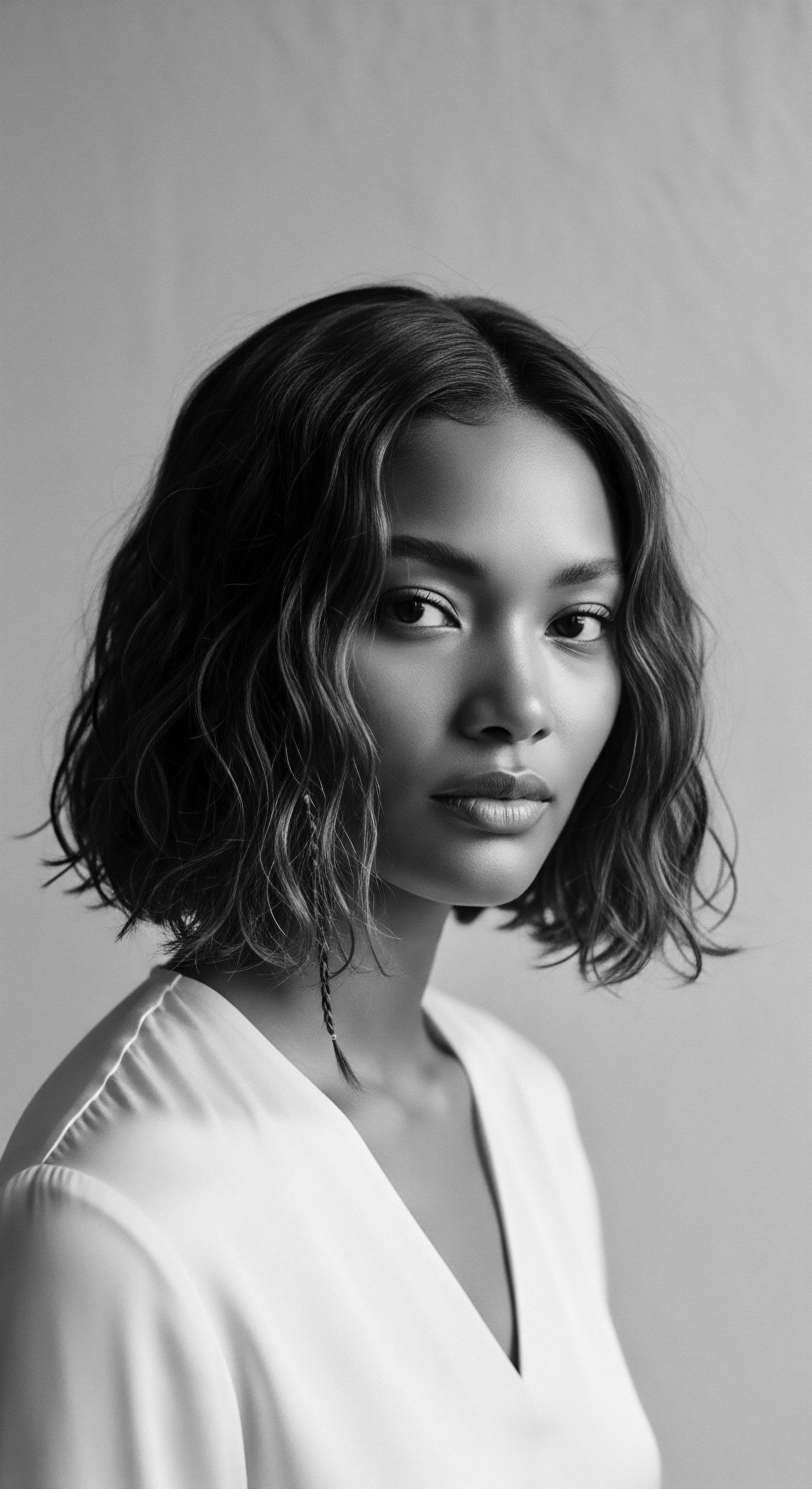
Academic
From an advanced academic vantage, the definition and meaning of Afro-Textured Hair transcend mere description, inviting a rigorous inquiry into its complex interplay of biological particularities, deep historical trajectories, and profound sociocultural implications within the broader tapestry of Black and mixed-race hair heritage. This is a living concept, continuously shaped by ancestral practices, scientific validation, and the ongoing assertion of identity. Its explication requires a compound understanding, drawing from fields as diverse as trichology, anthropology, sociology, and critical race theory, all viewed through the profound lens of heritage.
The significance of Afro-Textured Hair, particularly its tightly coiled morphology, is not merely aesthetic; it carries profound implications for its biophysical properties. The elliptical cross-section of the hair shaft, combined with a higher number of cuticle layers and a unique distribution of disulfide bonds, contributes to its distinctive helical structure. This architecture provides exceptional volume and elasticity, yet also renders the hair more susceptible to mechanical stress and moisture loss due to its many points of curvature and lifted cuticle scales.
Such scientific insights affirm the intuitive wisdom of ancestral care practices that prioritized hydration, protective styling, and gentle manipulation. The historical ingenuity of these methods, developed without microscopes or chemical analyses, stands as a testament to embodied knowledge passed through generations.
The ongoing evolution of Afro-Textured Hair’s meaning is particularly salient in contemporary discussions of professionalism and beauty standards. A 2020 study by Duke University, for instance, found that Black women with natural hairstyles were perceived as less professional and less competent, and were less likely to be recommended for job interviews than candidates with straight hair. This sociological reality, despite increasing awareness and legislative efforts like the CROWN Act, underscores the persistent legacy of Eurocentric beauty ideals that emerged from colonial and enslavement periods. The very structure of Afro-Textured Hair, therefore, becomes a site of ongoing negotiation between ancestral pride and systemic bias, demanding a continuous re-evaluation of societal norms.

The Biophysical Signature
The biophysical signature of Afro-Textured Hair presents a compelling area of study. Its unique helical shape, characterized by varying degrees of curl tightness and density, results from a complex interplay of genetic factors and cellular differentiation within the hair follicle. The growth pattern, often described as a spiral or zigzag, leads to reduced contact points between adjacent strands, contributing to its inherent volume but also increasing its susceptibility to tangling and knotting.
Understanding this microscopic architecture provides a scientific basis for the efficacy of traditional detangling methods, such as finger-combing or using wide-toothed tools, which minimize friction and breakage. This scientific understanding serves not to supplant ancestral wisdom, but to provide a deeper explanation for its enduring effectiveness, revealing how biological realities shaped historical care rituals.
Afro-Textured Hair’s biological distinctiveness underpins ancestral care practices, offering a scientific validation of inherited wisdom.

Sociocultural Semiotics of Hair
From an anthropological and sociological perspective, Afro-Textured Hair serves as a powerful semiotic system, conveying complex messages about identity, community, and resistance. In pre-colonial Africa, hairstyles were sophisticated forms of non-verbal communication, denoting status, age, and spiritual alignment. The imposition of Eurocentric beauty standards during colonialism and slavery sought to dismantle this symbolic power, reducing Afro-Textured Hair to a marker of inferiority. Yet, within the diaspora, hair continued to serve as a clandestine and then overt expression of cultural identity and political consciousness.
The emergence of the Afro during the Civil Rights and Black Power Movements in the 1960s and 70s was a powerful counter-hegemonic statement, a visual reclamation of Black pride and a rejection of imposed norms. This period saw Afro-Textured Hair become a deliberate symbol of unity and collective identity, demonstrating how hair can be a site of profound political struggle and cultural affirmation.
The contemporary “natural hair movement” represents a continuation of this legacy, challenging prevailing beauty standards and advocating for the acceptance and celebration of Afro-Textured Hair in its authentic form. This movement is not merely a trend; it is a sociocultural phenomenon rooted in a long history of resistance and self-determination. It involves a conscious decision to connect with ancestral heritage, often prompting individuals to research traditional care practices and rediscover the rich cultural significance of their hair. The choice to wear Afro-Textured Hair naturally becomes an act of self-love, cultural pride, and a political statement against systemic discrimination.
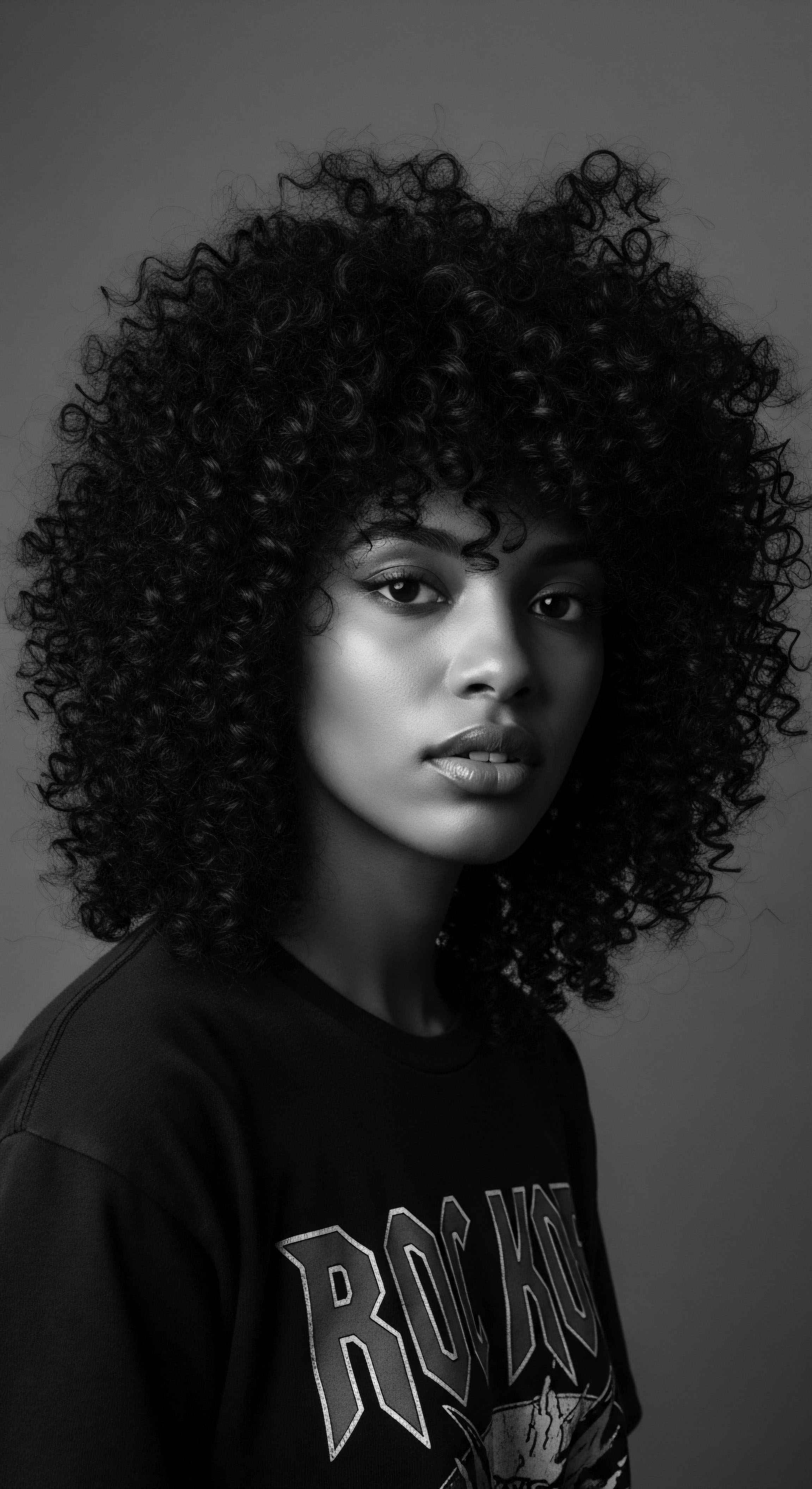
The Future Echoes of Ancestry
The academic understanding of Afro-Textured Hair extends into its future implications, recognizing that the heritage of this hair type continues to inform innovation and advocacy. Research into the specific biomechanics of coily hair is leading to the development of tailored products and tools that honor its unique needs, often drawing inspiration from the efficacy of traditional ingredients and methods. This convergence of scientific inquiry and ancestral wisdom holds the promise of truly holistic care solutions.
Furthermore, the legal and social battles against hair discrimination, exemplified by the CROWN Act, reflect a societal awakening to the deep historical and cultural injustices associated with Afro-Textured Hair. These legislative efforts, grounded in a recognition of hair as an expression of racial and cultural identity, represent a collective endeavor to dismantle systemic barriers and ensure equitable treatment. The long-term consequences of this advocacy aim to cultivate environments where the beauty and diversity of Afro-Textured Hair are not only accepted but celebrated, allowing individuals to carry their heritage with pride and without fear of prejudice. This represents a continuation of the ancestral fight for dignity and self-determination, echoing the past’s resilience into the future.

Reflection on the Heritage of Afro-Textured Hair
The journey through the intricate landscape of Afro-Textured Hair reveals a profound truth ❉ it is a living archive, each strand holding the whispers of ancestors, the resilience of generations, and the vibrant pulse of cultural continuity. Its very existence, in its diverse forms and textures, speaks to a heritage that has weathered immense challenges, transforming moments of oppression into opportunities for profound self-expression and collective affirmation. The Soul of a Strand ethos finds its deepest resonance here, acknowledging that hair is not merely a biological extension, but a sacred part of one’s being, deeply intertwined with identity and spirit.
To understand Afro-Textured Hair is to listen to the echoes from the source, to recognize the ancient wisdom embedded in traditional practices that nurtured and adorned it. It is to appreciate the tender thread of care passed down through communal rituals, a legacy of shared moments and embodied knowledge. And it is to witness the unbound helix, a symbol of liberation and self-determination, continuously shaping futures while honoring its deep roots.
This understanding invites a reverence for the ingenuity of those who preserved this heritage, adapting and innovating through centuries, ensuring that the stories held within each coil would never be silenced. The beauty of Afro-Textured Hair is therefore not just in its physical form, but in the enduring spirit it represents—a spirit of beauty, strength, and unwavering connection to a rich ancestral past.

References
- Banks, I. (2000). Hair Matters ❉ Beauty, Power, and Black Woman’s Consciousness. New York University Press.
- Byrd, A. D. & Tharps, L. L. (2001). Hair Story ❉ Untangling the Roots of Black Hair in America. St. Martin’s Press.
- Cobb, J. N. (2023). New Growth ❉ The Art and Texture of Black Hair. Duke University Press.
- Dabiri, E. (2019). Twisted ❉ The Tangled History of Black Hair Culture. Harper Perennial.
- Jacobs-Huey, L. (2006). From the Kitchen to the Parlor ❉ Language and Becoming in African American Women’s Hair Care. Oxford University Press.
- Rooks, N. M. (1996). Hair Raising ❉ Beauty, Culture, and African American Women. Rutgers University Press.
- Sieber, R. & Herreman, F. (2000). Hair in African Art and Culture. The Museum for African Art.
- Thompson, C. (2008). Black women and identity ❉ What’s hair got to do with it? Michigan Feminist Studies, 22(1).
- Thompson, C. (2009). Black women, beauty, and hair as a matter of being. Women’s Studies, 38(8), 831-856.
